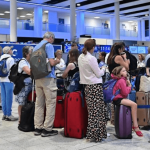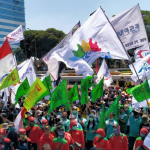
the plight of irregular migrants
Tragic events that have recently occurred around the world serve as a reminder of the enormous risks that irregular migrants endure while travelling at great risk. A ship carrying hundreds of migrants perished in the Mediterranean Sea off the coast of Greece in one such instance, leaving dozens of people dead and hundreds more unaccounted for. The horrifying experiences of Afghan migrants who were abducted and tortured by gangs in Iran in exchange for ransom were also made public by a BBC investigation. These incidents highlight the perils that undocumented migrants endure around the world, yet in spite of these threats, migrants continue to set out on perilous voyages in quest of security, hope, and better prospects.
The Challenges Faced by Irregular Migrants
Lack of official government permission and diverse motivations
Borders are crossed by unauthorized immigrants without official government authorization. While some seek refuge from persecution and bloodshed, others look for job possibilities. Many migrants are motivated to travel perilously in quest of safety and hope by a confluence of economic misery and violent oppression.
Unsafe and uncomfortable means of travel
Illegal immigrants frequently lack the tools and authorizations needed for comfortable and safe travel. They are left with little alternative except to walk for incredibly long distances or use dangerous forms of transportation. For instance, migrants who transit through Mexico on their way to the US frequently risk their lives by boarding perilous trains. Tragic events, such as the recent disaster near Greece, draw attention to the dangers of overcrowded vessels and the high rate of drownings in the Mediterranean.
Exposure to inhospitable environments
The journey across hostile landscapes including mountains, deserts, and jungles is exhausting and risky for irregular migrants. Extreme weather, such as cold and hot temperatures, rain, snow, and sun exposure, provide serious concerns. Snakebites and other natural dangers are more prevalent in some areas, such as the Darien Gap between Colombia and Panama. Attempting to cross rivers often results in fatalities for migrants, leaving them exhausted, hurt, and unable to seek medical attention.
Keep Reading
Vulnerability to exploitation and violence
As they sleep outside and travel along perilous routes, irregular migrants run the risk of being killed, beaten, raped, and stolen from. In order to profit from their plight, human traffickers, gangs, and other criminals use both violent and nonviolent types of exploitation. Along major routes, migrants are frequently subjected to sexual abuse and exploitation for unpaid or low-wage labour while others are forced to pay exorbitant costs for necessities like water, food, and shoes. Exploitation continues both throughout their journey and when they arrive, further putting their lives in jeopardy.
Motivations and Determination to Migrate
Lack of awareness vs. desperation
Because human traffickers frequently mislead them about the length and complexity of the trips, some migrants may not fully understand the risks associated in their journeys. However, despite being well aware of the risks, many migrants continue. Stories of migrants who fail in their first tries but keep trying anyhow, crossing various borders and going through numerous hardships, illustrate their unwavering persistence.
Little left to lose
To pay for their journeys, irregular migrants frequently invest all of their savings or take out loans from friends and relatives. Along the road, many migrants experience robberies that leave them penniless. Despite these setbacks, they do not view failure as an option. Migrants see the risks involved in the voyage as a vital method of reuniting with their families, finding safety and hope, or securing employment opportunities to support their loved ones. They are fleeing violence and suffering in their native countries.
Addressing the Challenges
Regulated pathways for migration
Countries should look into more regulated migration pathways rather than merely relying on deterrence measures like barriers and strict border policing. With this strategy, there would be less need for risky voyages as migrants might find legal ways to access prospects for employment, family reunion, or safety.
Addressing root causes
The root causes of irregular migration must be addressed in order to stop people from setting off on risky voyages. In order to establish an atmosphere where migration is a choice rather than a dire necessity, it is important to address issues of violence, conflict, and economic despair in the home countries of migrants.
Risky voyages, exploitation, and a constant search for safety, hope, and better chances characterize the situation of irregular migrants. Recent tragedies and investigations have brought to light the urgent need to address the hazards that migrants face and provide long-term solutions. The international community can lessen the risks and develop a more humanitarian approach to migration that places a higher priority on the safety and well-being of people who are looking for a better life by offering controlled migratory channels and addressing the reasons of migration.









